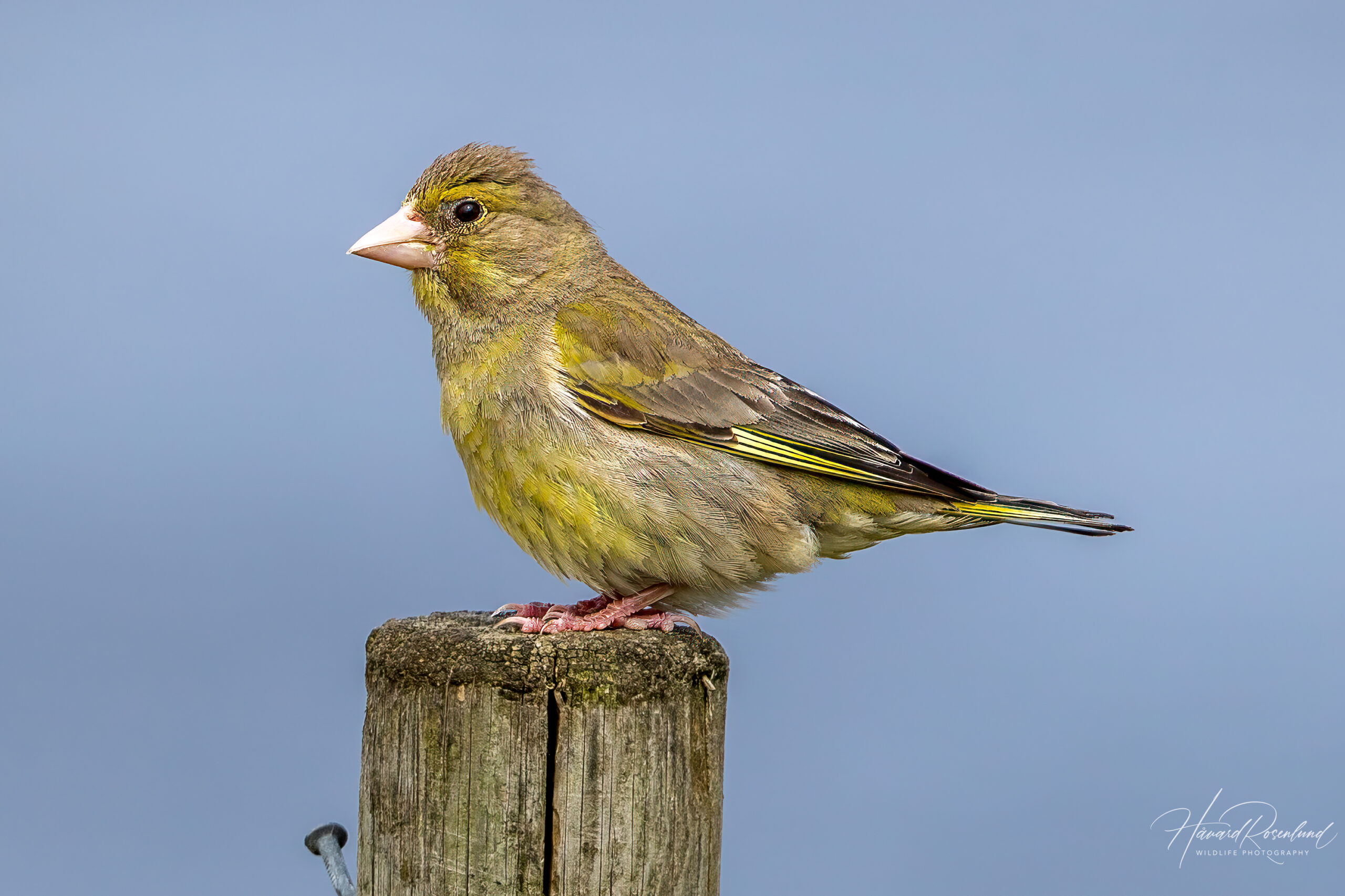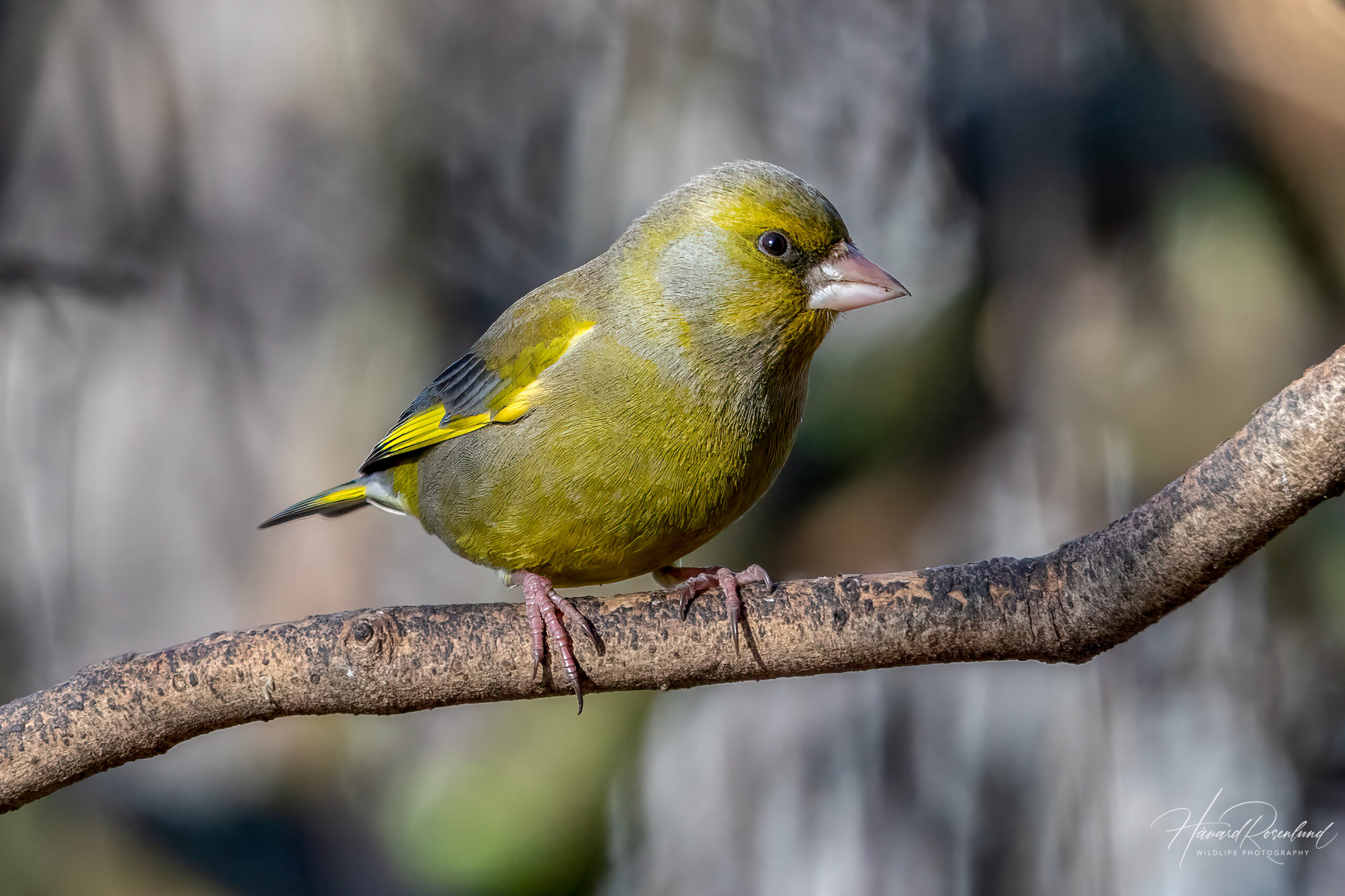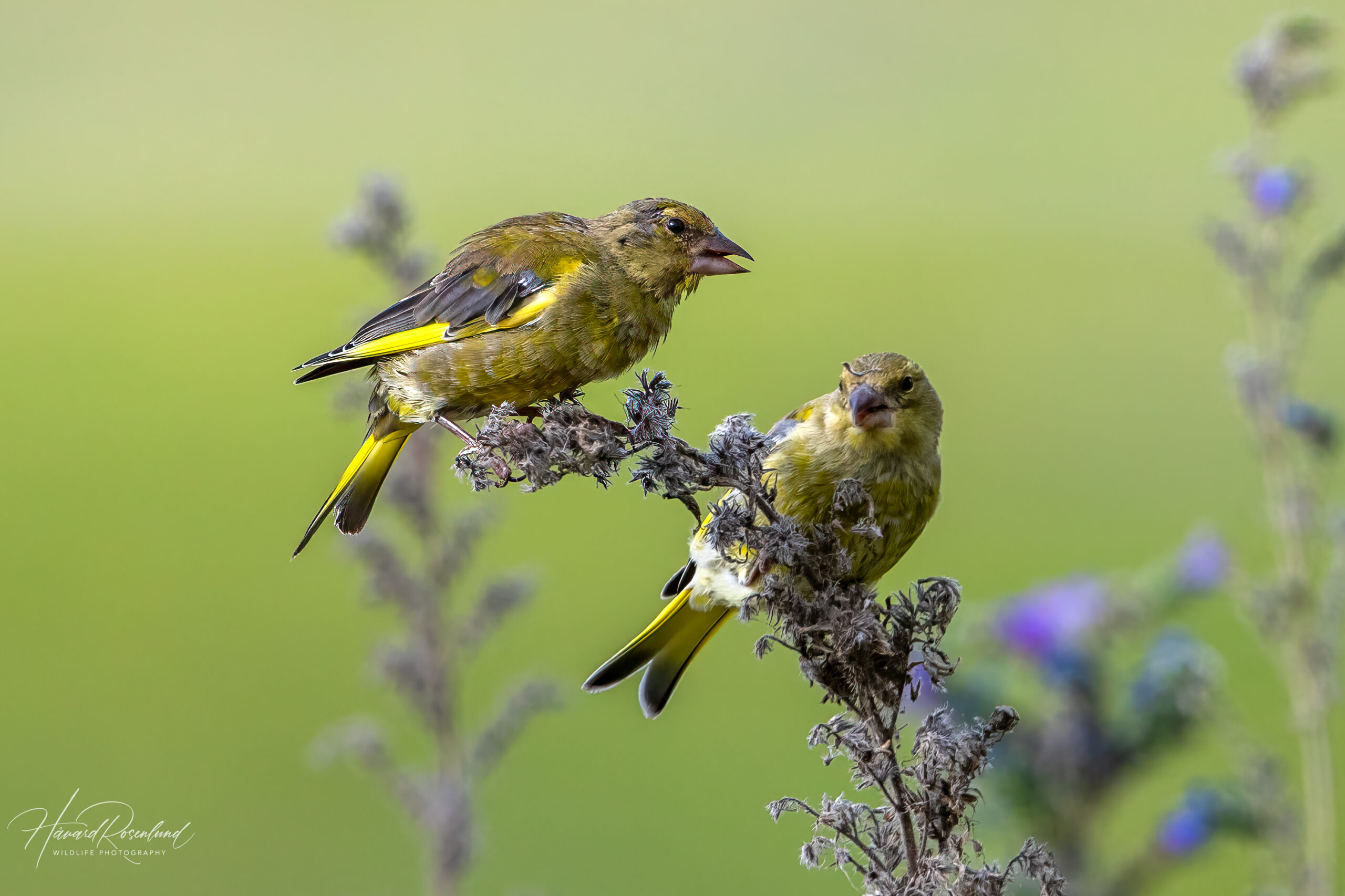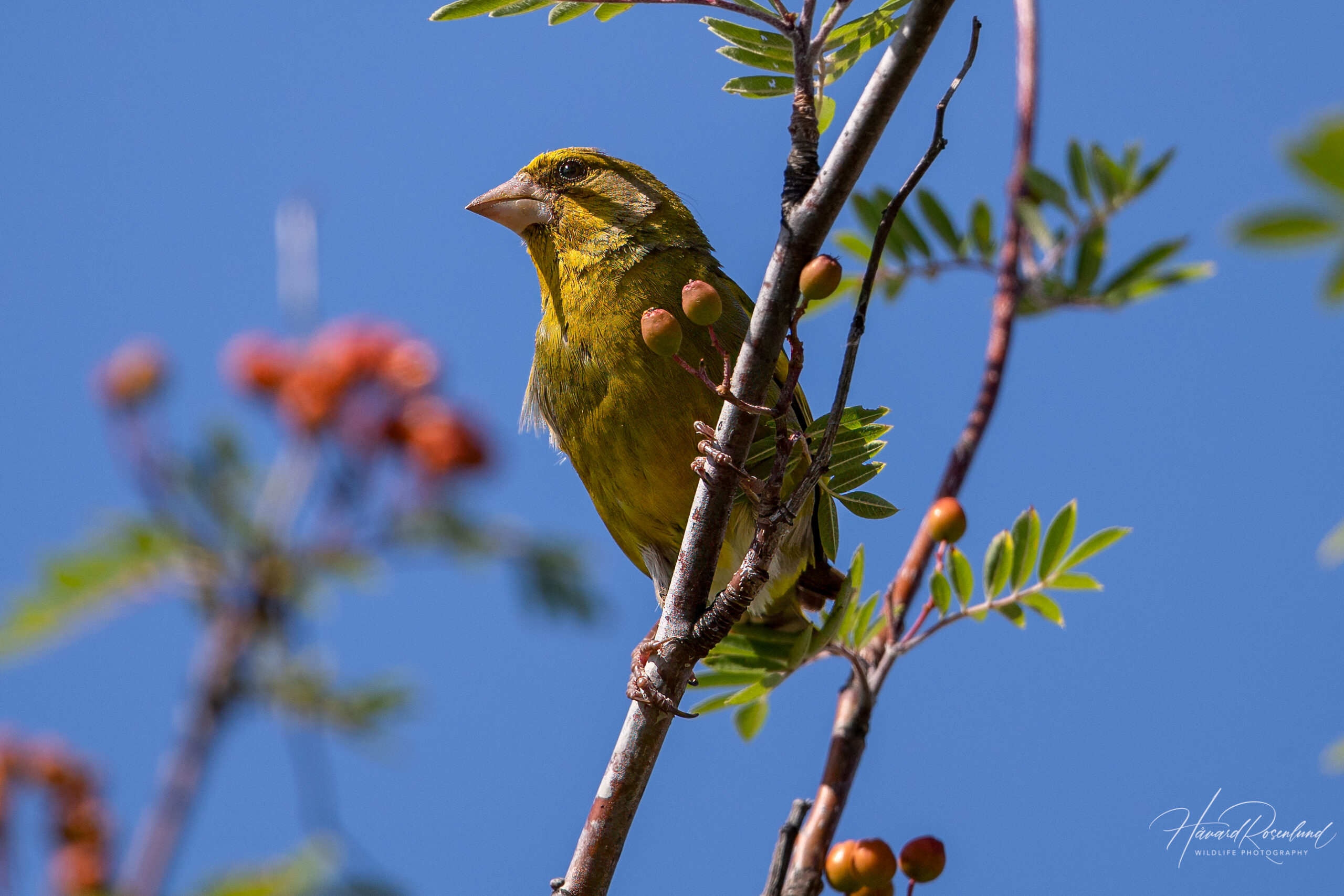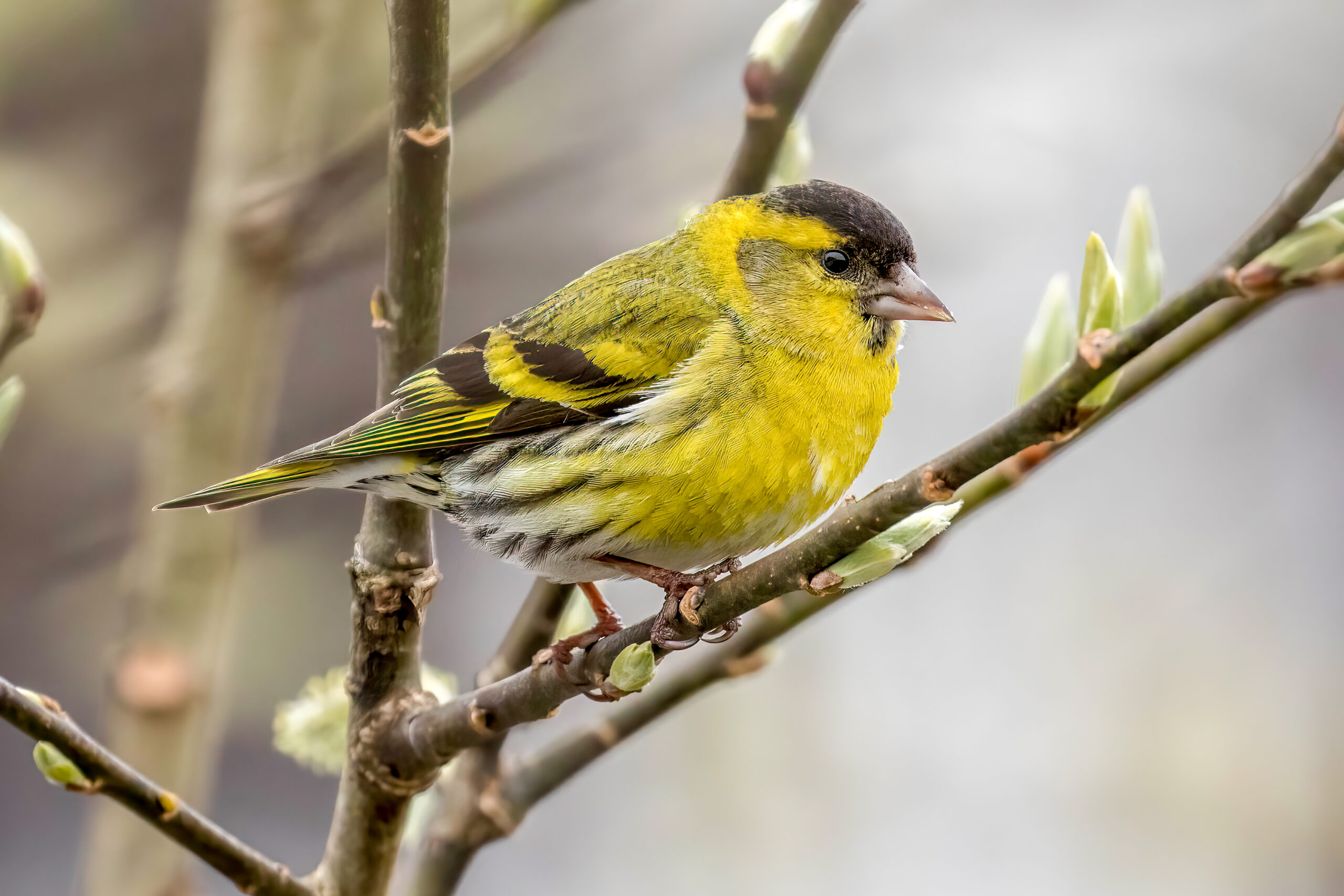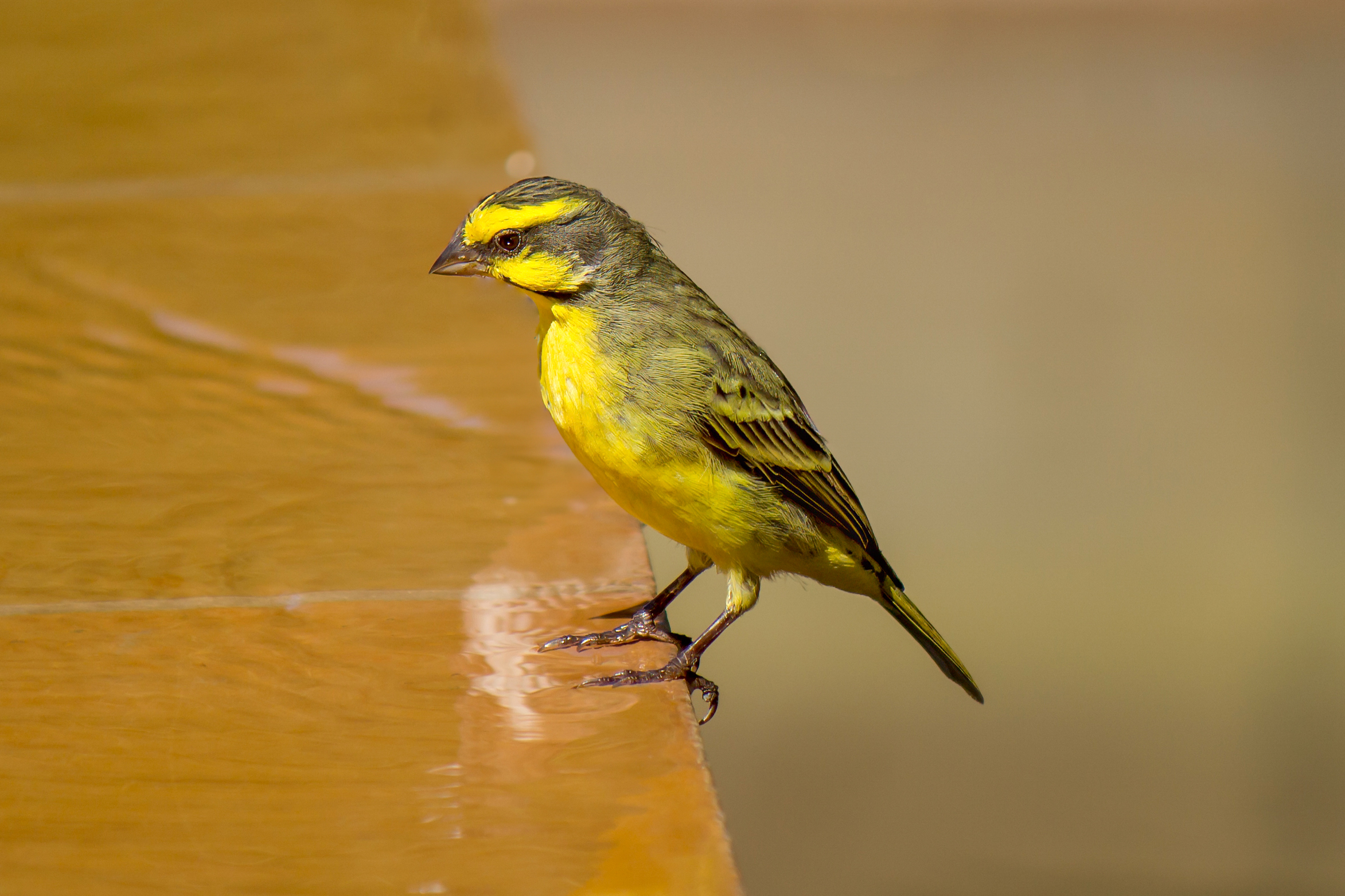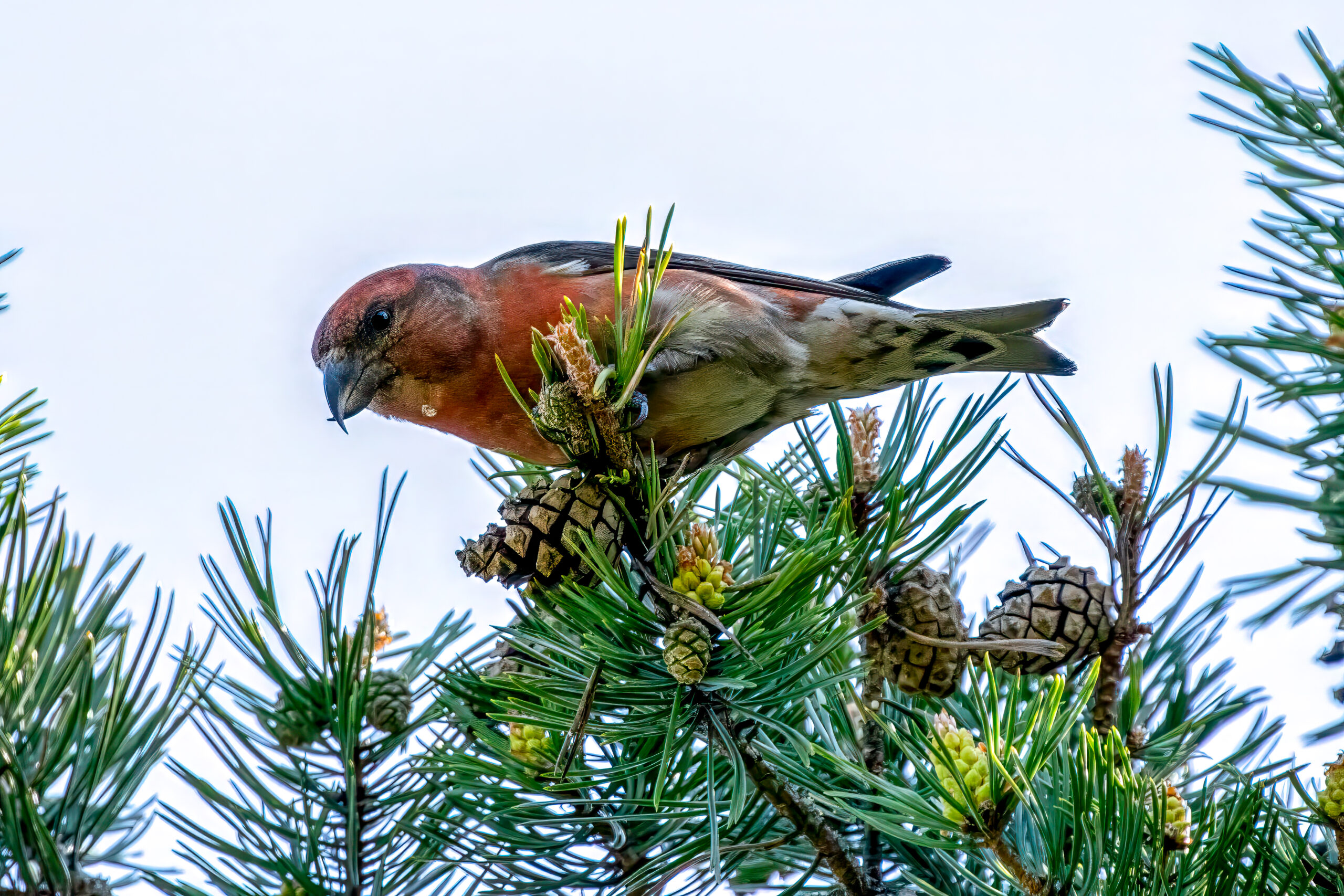European Greenfinch
(Chloris chloris)
Description
The European greenfinch (Chloris chloris) is a fairly large species of finch, found predominantly in Europe, as well as parts of Central Asia and North Africa. Adults typically measure between 15 to 16 cm (5.9-6.3 in) in length, with a robust body, a large head, and a strong, conical beak adapted for seed eating. The bird’s plumage is green with some grey patches, and with yellow highlights on the wings and tail, noticeable during flight. Males are usually brighter in color than females, with the green being more vibrant. They can be distinguished from similar species by their larger and chunkier body shape, the distinct yellow patches and green plumage, and a slightly forked tail. Another notable feature of the European greenfinch is its song, which consists of a pleasant mix of trills and twitters, often delivered from a high perch.
Diet & habitat
European greenfinches are adaptable birds, found in a variety of habitats ranging from gardens and orchards to parks and woodlands, as long as there are sufficient trees and shrubs. The species thrives in both rural and urban settings. These birds primarily feed on seeds, but their diet can also include berries and small insects, especially during the breeding season. They feed both on the ground and in trees, showing flexibility in foraging behavior. Greenfinches frequent garden feeders, making them a common sight in suburban areas.
Migration
Greenfinches are largely sedentary, with northern populations exhibiting some migratory behavior. Birds from colder regions may move southwards to spend the winter in warmer areas, although significant long-distance migrations are uncommon.






